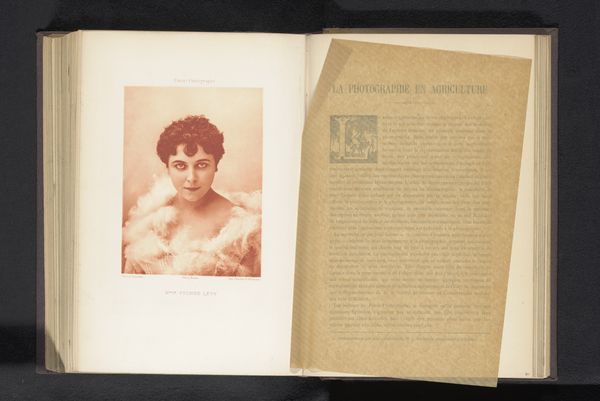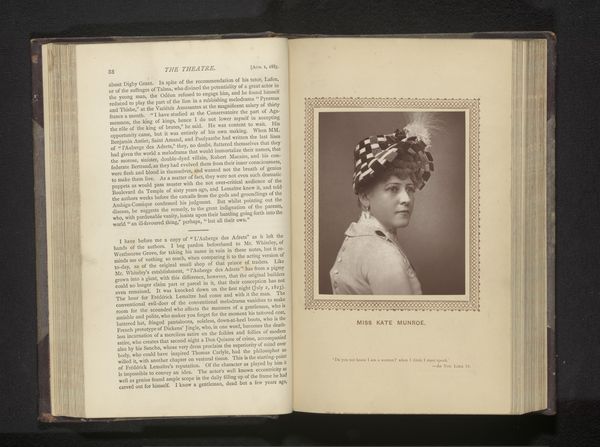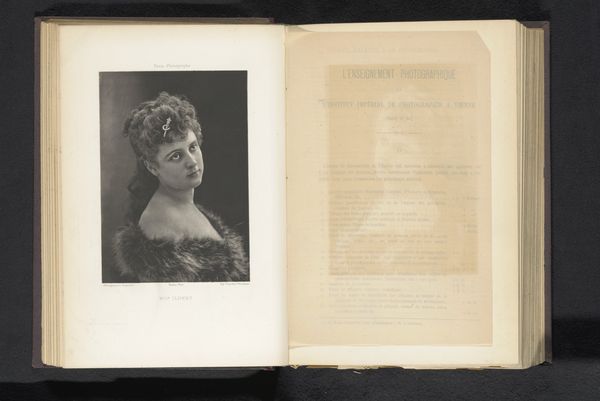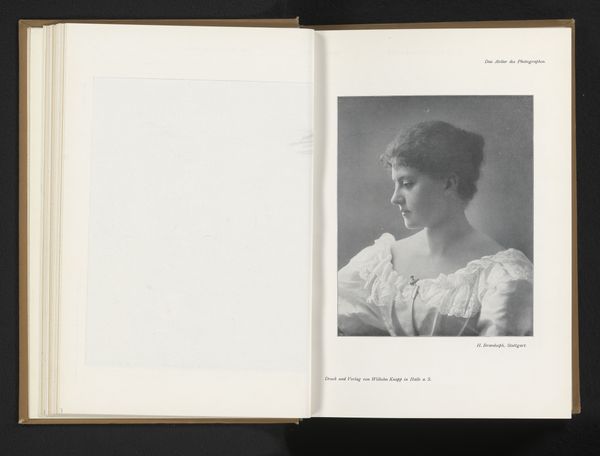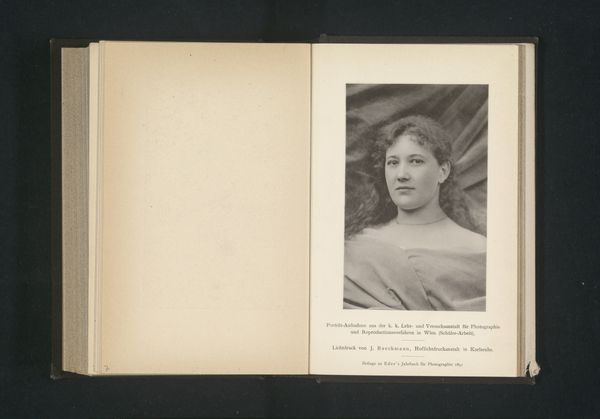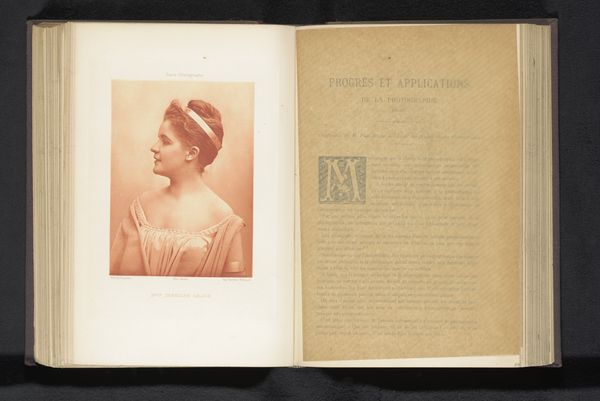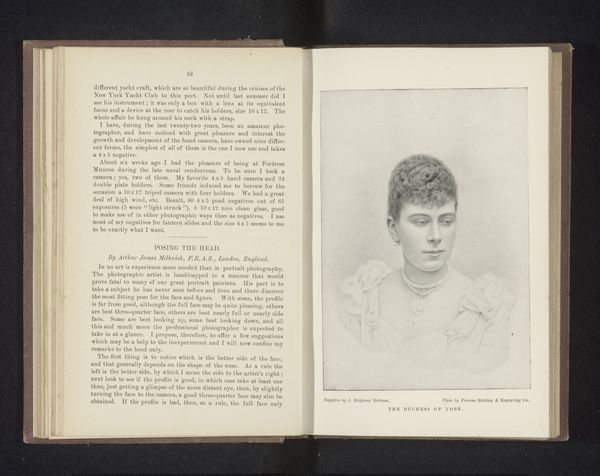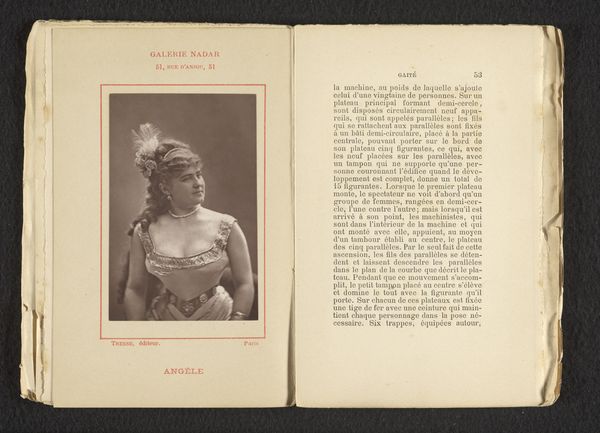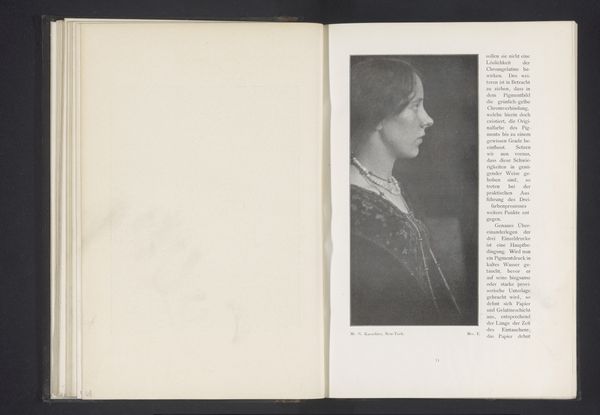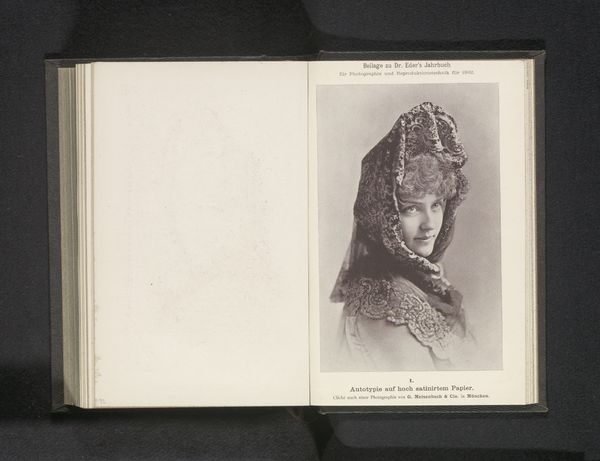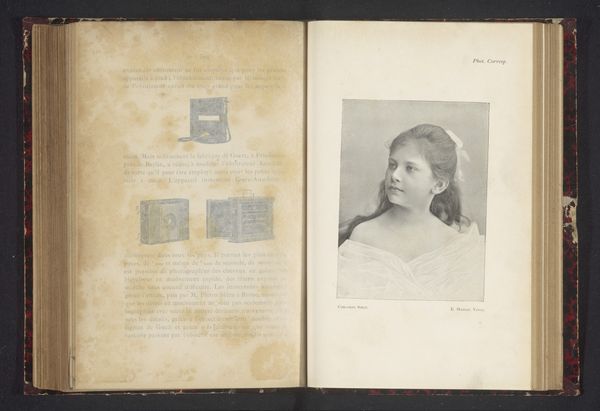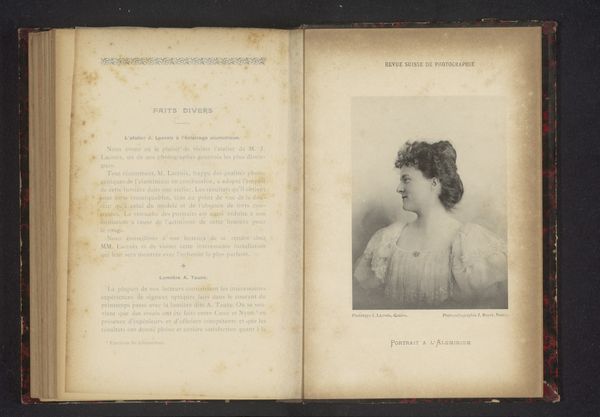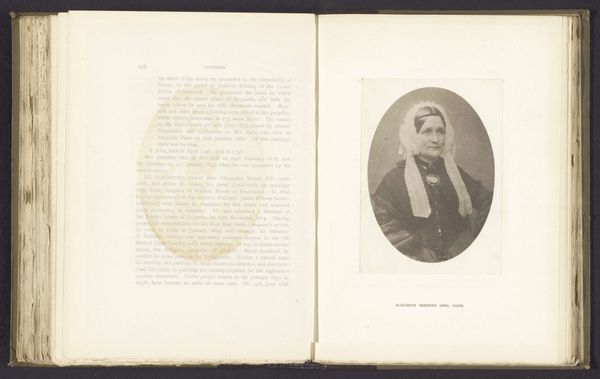
print, paper, photography
#
portrait
#
paper non-digital material
#
pictorialism
# print
#
paper
#
photography
Dimensions: height 142 mm, width 106 mm
Copyright: Rijks Museum: Open Domain
Curator: Nadar's photographic print, "Portret van Emma Eames," made before 1892, is quite striking. It's a portrait rendered on paper, currently housed here at the Rijksmuseum. What catches your eye about it? Editor: The dreamlike quality really grabs me. The soft focus and the way the light seems to embrace her shoulders feels incredibly intimate, almost voyeuristic. Is this intentional or something about the development of the photograph at the time? Curator: Both, actually. Nadar, known for his pictorialist approach, deliberately manipulated the photographic process to achieve this very effect. Pictorialism, in the late 19th century, aimed to elevate photography to the level of fine art, emphasizing artistic expression over purely documentary representation. Editor: So, it's a conscious choice to imbue the photograph with emotion and subjectivity. I’m thinking about the objectification of women during this period and the rise of photography as a tool, potentially reinforcing gender roles, so does it challenge these dynamics in some way, maybe through its deliberate artfulness? Curator: Exactly. Emma Eames was a celebrated opera singer, an artist in her own right. By presenting her in this soft, ethereal manner, Nadar isn't just capturing her likeness, he's hinting at the power of her persona, but perhaps also alluding to the limitations put on women at this time by focusing only on beauty and aesthetics. Consider, too, the symbolism of the pearls, often associated with purity and wealth. They subtly speak to her status. Editor: Right. The pearls work to fix her within a set of established understandings. How interesting to consider this through a feminist lens as to her autonomy as an individual vs an aesthetic image of society, constructed to contain the expectations put on female performers at that time. This is fascinating because it challenges our preconceptions about portraiture, gender, and status, prompting critical thinking and analysis. Curator: It certainly does. Nadar uses his tools of image and perception to convey and also maybe even subtly question some assumptions within the society that framed him. Editor: Looking closer, it makes me think more carefully about who the subject really is and the power structures inherent within art. Curator: For me, Nadar created a space for artistic expression and societal analysis, embedded within a beautiful portrait.
Comments
No comments
Be the first to comment and join the conversation on the ultimate creative platform.
